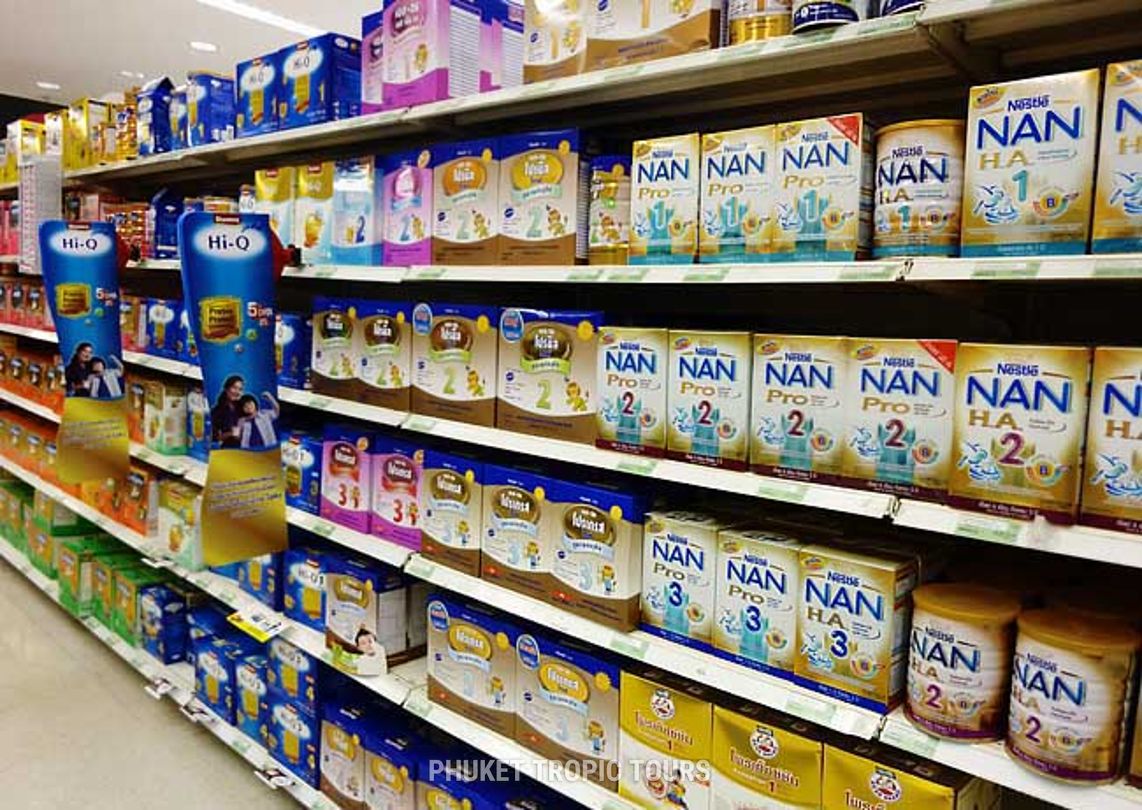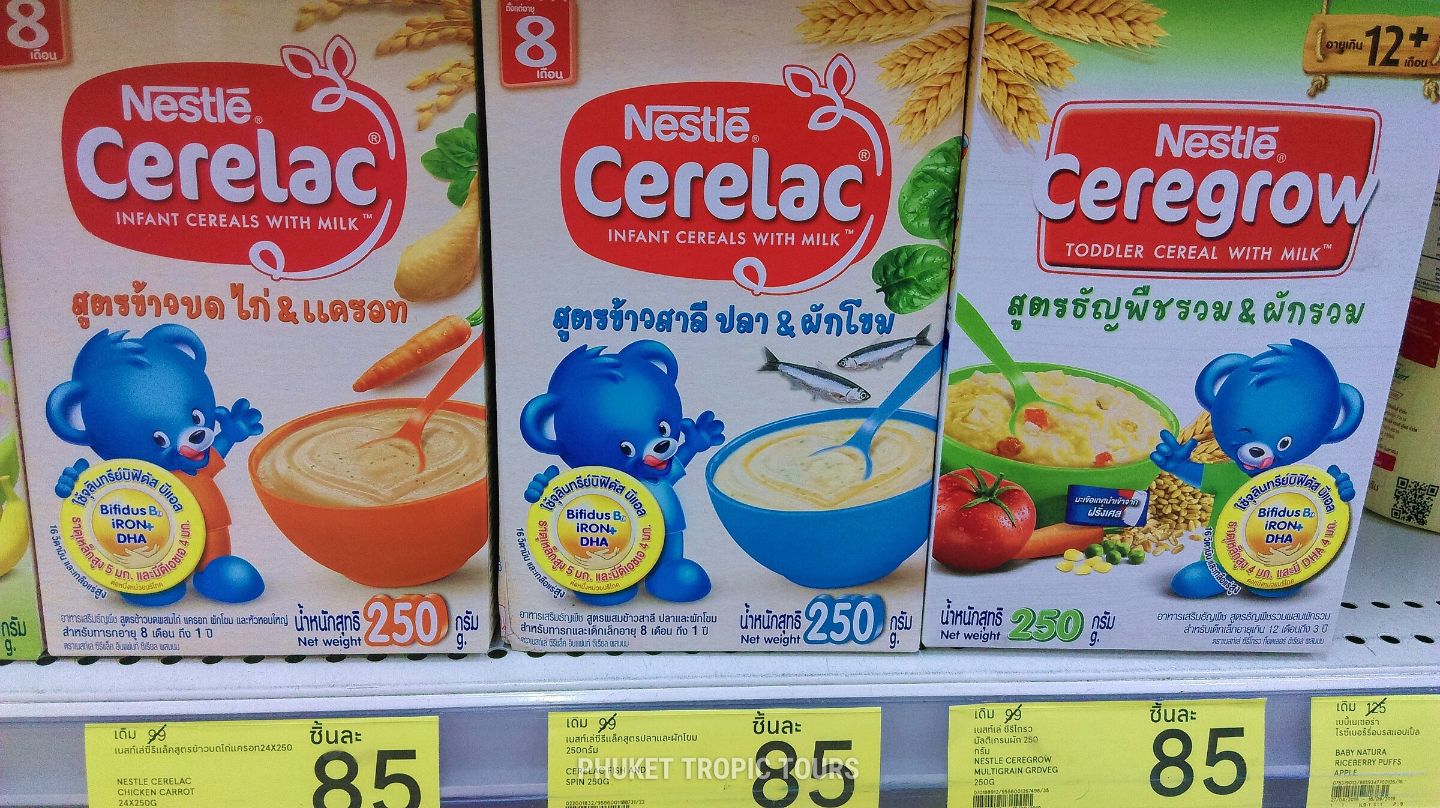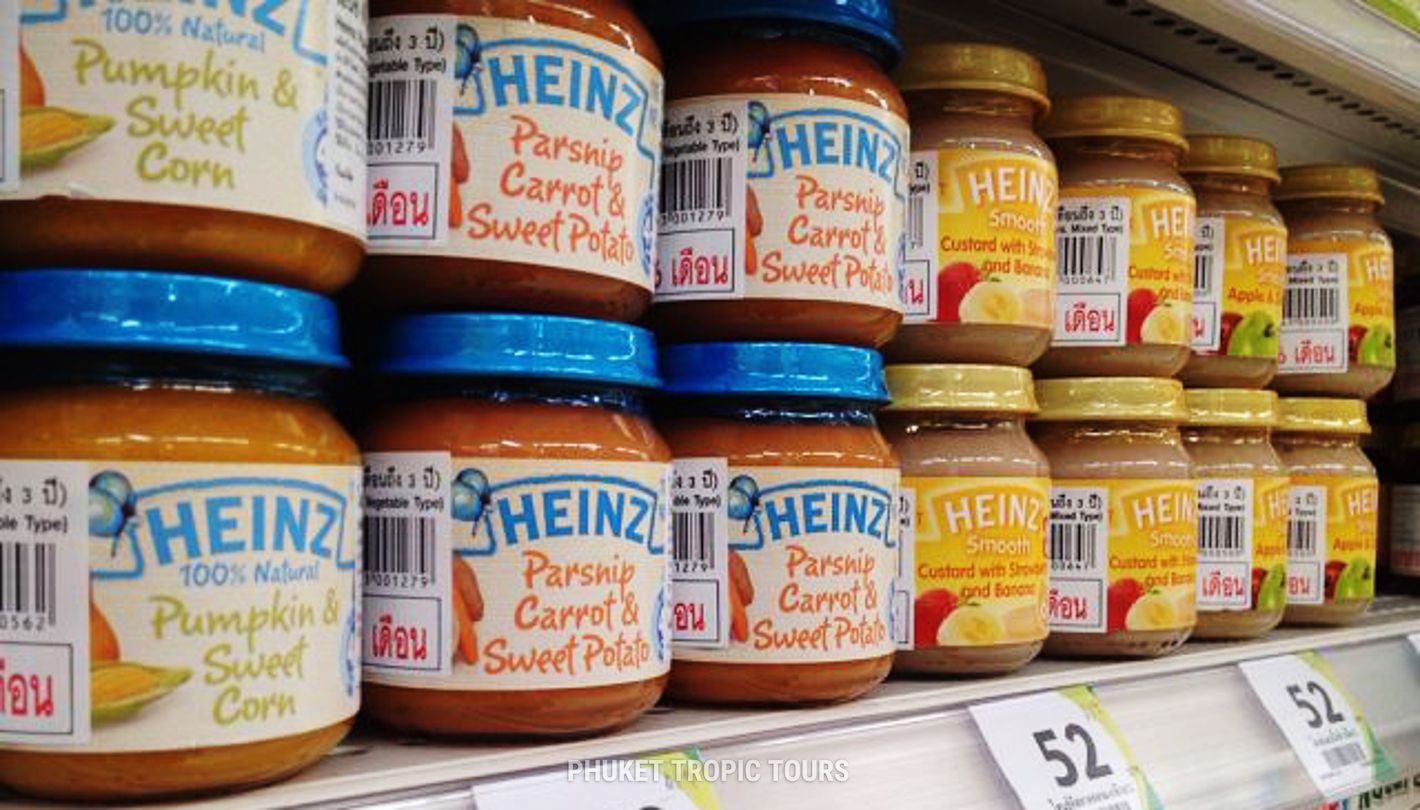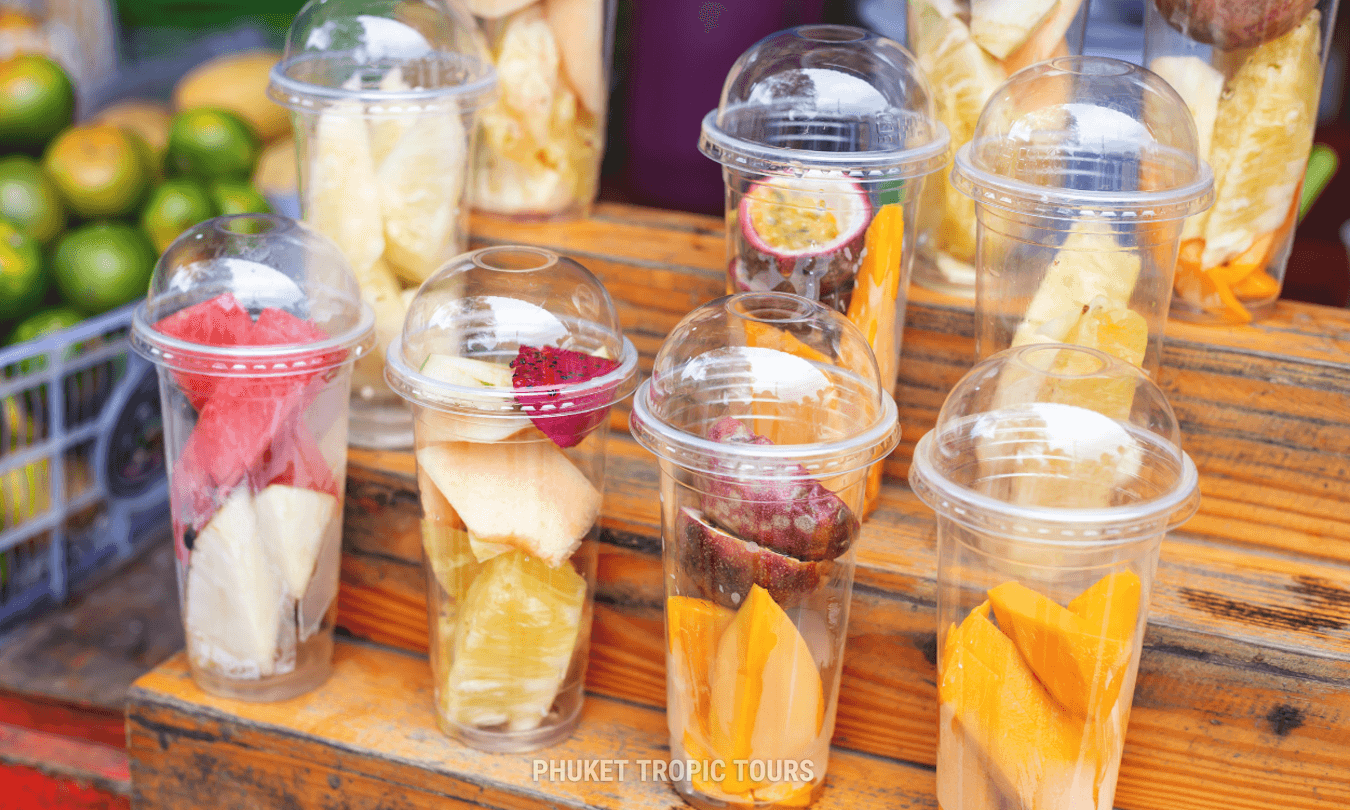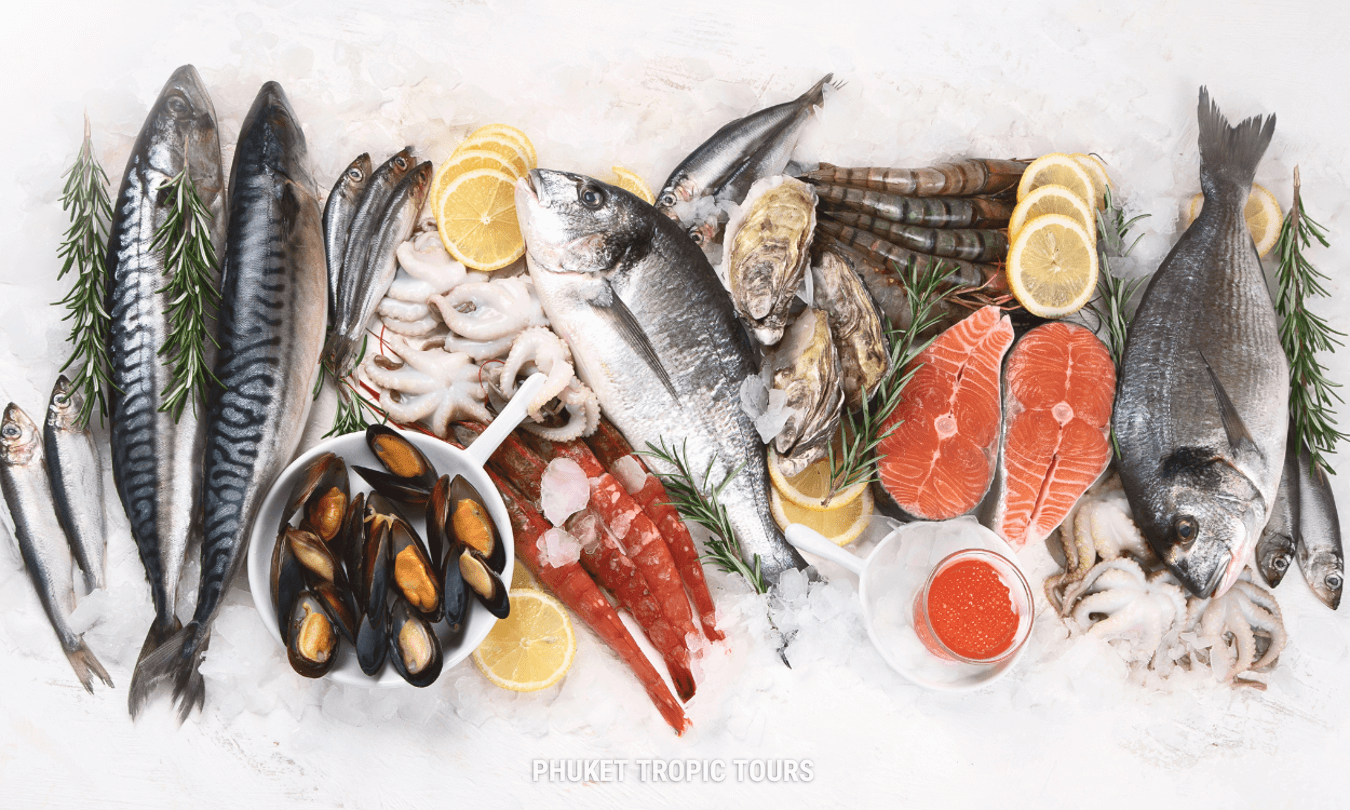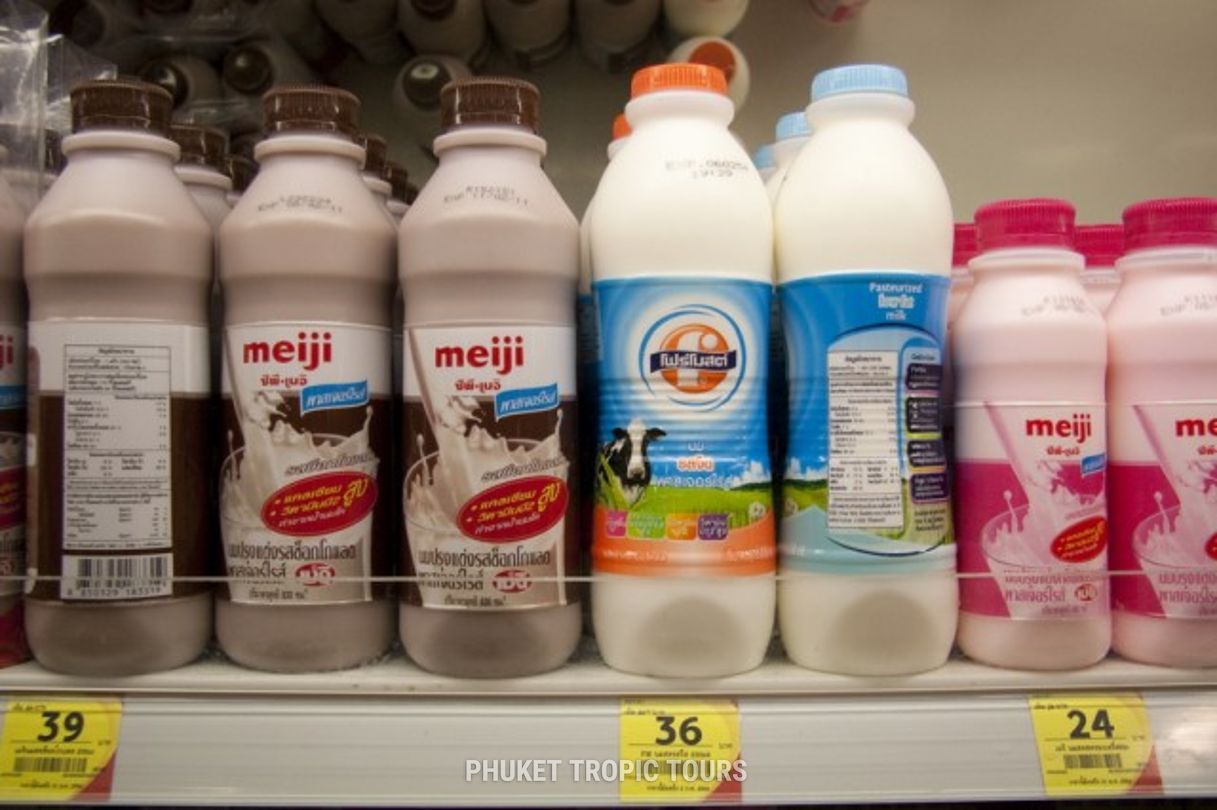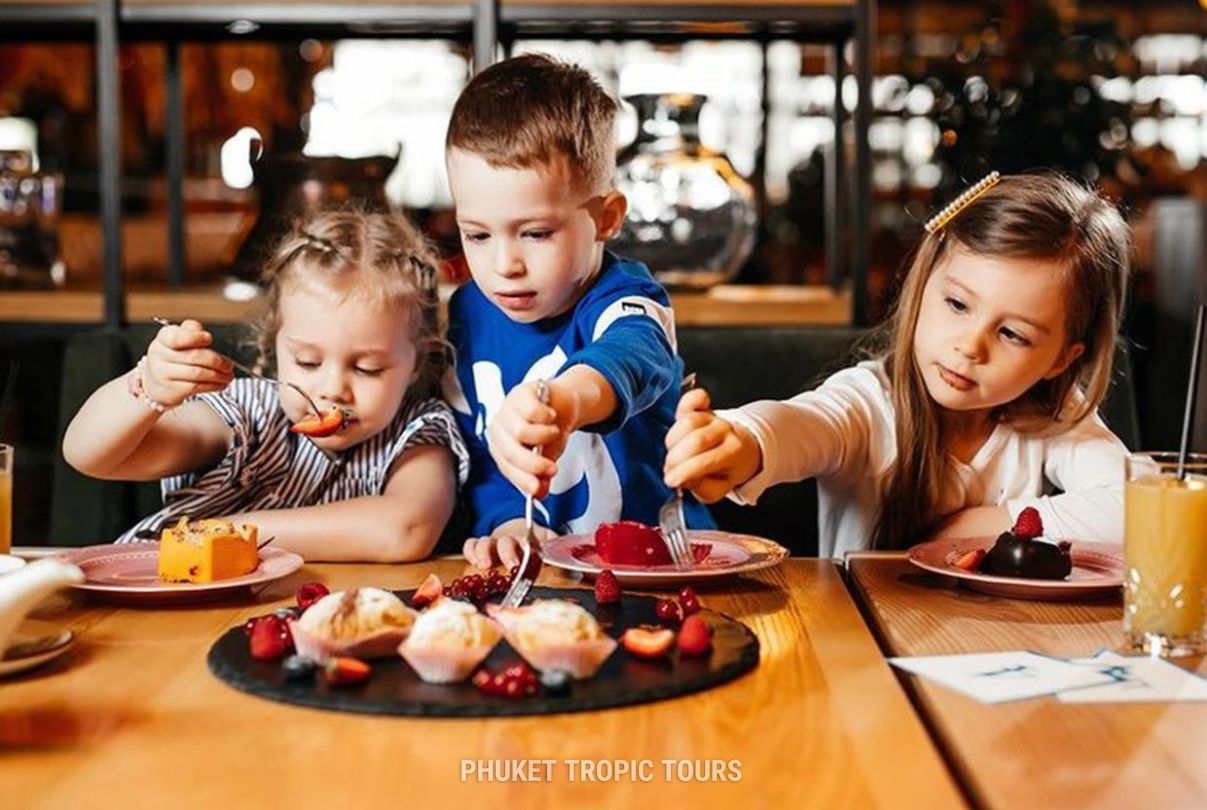Inside the app, you will find a promo code for a discount on your first tour!
Anyone who has been to Thailand more than once knows that there’s no need to bring a suitcase full of baby food, porridge, or formula. Everything can be easily found in Thai supermarkets. But what should you feed your child in Thailand to avoid allergies and digestive issues? And how much does baby food cost in this little paradise?
What to Feed Babies in Thailand?
Baby food options in Thailand are more limited compared to Russia. There are no options like zucchini, beef, or buckwheat. Instead, you’ll find a variety of exotic fruit combinations. The available brands are mainly Nestle and Heinz, and finding other brands can be difficult.
Baby Formula
Most formulas in supermarkets are variations of Nestle and NAN. There are lactose-free and soy-based options, as well as goat milk formulas. If your baby is not prone to allergies, you might try the local brand Wyeth, which is almost half the price of imported formulas, dissolves well, and is enriched with vitamins. Prices range from 250 to 500 THB per can.
Porridge
Baby cereals in Thailand are also mostly from Nestle. The selection is small, with no buckwheat options available. You will find rice porridge (a staple for Thai children), oatmeal, and multigrain porridge. Most varieties include fruit additives such as apples, bananas, peaches, and even chocolate. A box of porridge costs around 60-80 THB.
Puree
Purees are mainly available from Heinz. There are familiar flavors like broccoli and cauliflower, as well as exotic options like parsnip and purple carrot. Some jars contain single ingredients, while others are mixed. However, you won’t find purees with fish. Prices range from 50-70 THB per jar.
Food for Preschool and School-Aged Children
Older kids can eat from the regular menu. Thai cuisine includes a lot of seafood, rice in various forms, and fruit-based sauces.
Fruits
Thailand offers an abundance of exotic fruits that are not commonly found in Russia. During the first few days of adjustment, it’s best to start with familiar fruits like grapes and bananas. Gradually, you can introduce papaya, mango, pineapple, passion fruit, and others. Avoid giving young children durian.
Seafood
Seafood is fresh, affordable, and widely available in Phuket and other tourist areas. You can try octopus, shrimp, crab, or exotic fish. If your child isn’t used to seafood, introduce it gradually to prevent digestive issues.
Dairy Products
Traditional dairy products for children, such as cottage cheese or kefir, are not commonly available in Thailand. Cheese is expensive, costing up to 1000 THB per kg. Milk is available but is not specifically formulated for children. The best options are natural yogurt or flavors like coconut, blueberry, and mango. Russian stores or specialty shops may carry cottage cheese and kefir.
Can You Feed a Child in Cafes?
Yes, children can eat the same dishes as adults, but be sure to inform the waiter to prepare the meal without salt and spices. You can always add seasoning yourself. Use the phrase "no spicy" ("mai phet") when ordering.
List of Thai Dishes for Kids
Most Thai dishes can be given to children as long as they are not spicy. Here are some kid-friendly options:
Khao Kai Tiao – Simple rice with an omelet, a common choice for kids as it is mild and easy to digest.
Kaeng Pa Kai– A vegetable soup with chicken, often prepared without spice for children. It contains a variety of vegetables and chicken breast, making it a nutritious option.
Kai Yang– Grilled chicken, a popular Thai dish usually served with a selection of sauces. For kids, it can be served without spicy sauces.
Khai Dao– Fried eggs, a simple and nutritious dish that most children enjoy.



